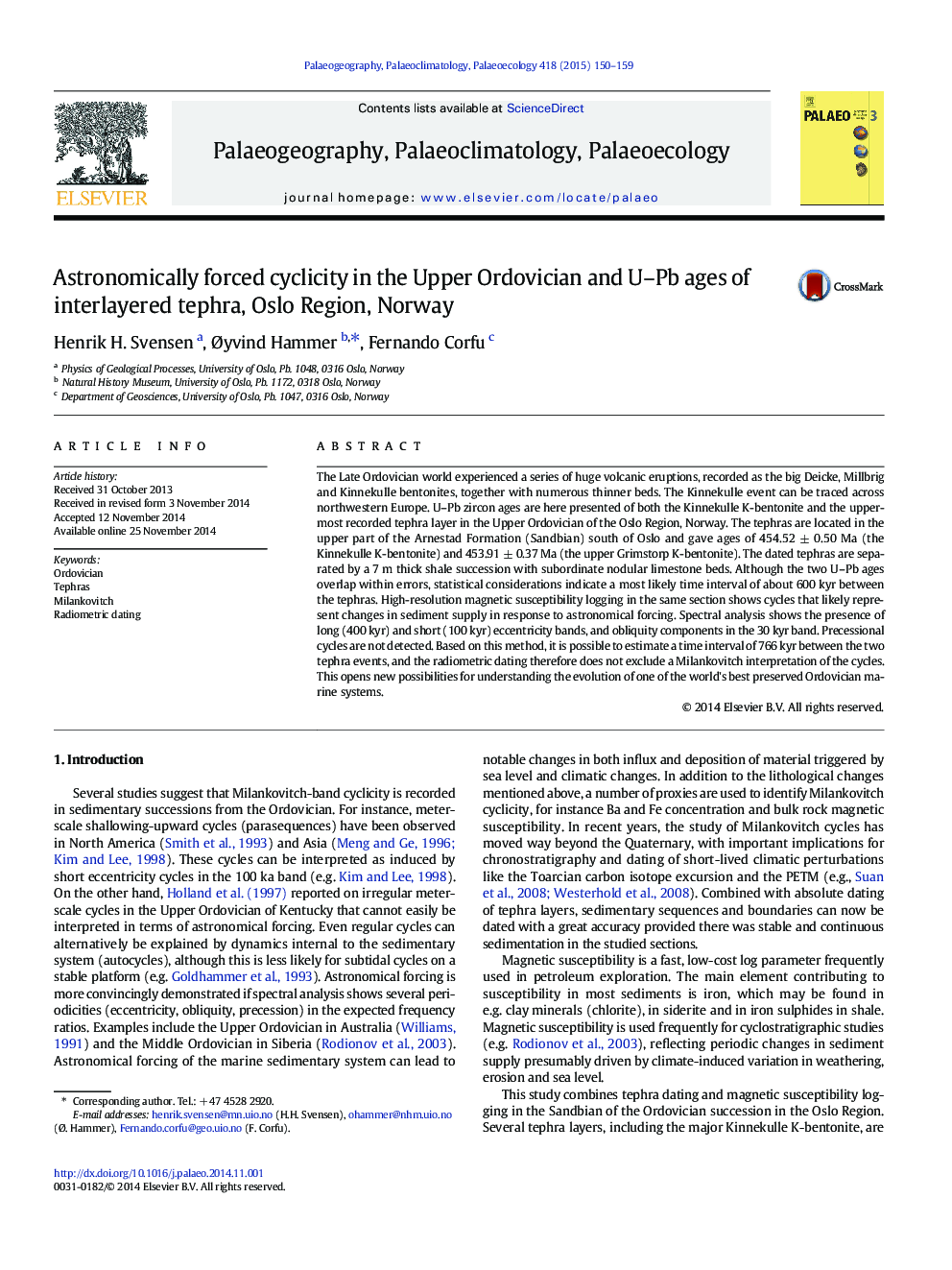| Article ID | Journal | Published Year | Pages | File Type |
|---|---|---|---|---|
| 6349803 | Palaeogeography, Palaeoclimatology, Palaeoecology | 2015 | 10 Pages |
Abstract
The Late Ordovician world experienced a series of huge volcanic eruptions, recorded as the big Deicke, Millbrig and Kinnekulle bentonites, together with numerous thinner beds. The Kinnekulle event can be traced across northwestern Europe. U-Pb zircon ages are here presented of both the Kinnekulle K-bentonite and the uppermost recorded tephra layer in the Upper Ordovician of the Oslo Region, Norway. The tephras are located in the upper part of the Arnestad Formation (Sandbian) south of Oslo and gave ages of 454.52 ± 0.50 Ma (the Kinnekulle K-bentonite) and 453.91 ± 0.37 Ma (the upper Grimstorp K-bentonite). The dated tephras are separated by a 7 m thick shale succession with subordinate nodular limestone beds. Although the two U-Pb ages overlap within errors, statistical considerations indicate a most likely time interval of about 600 kyr between the tephras. High-resolution magnetic susceptibility logging in the same section shows cycles that likely represent changes in sediment supply in response to astronomical forcing. Spectral analysis shows the presence of long (400 kyr) and short (100 kyr) eccentricity bands, and obliquity components in the 30 kyr band. Precessional cycles are not detected. Based on this method, it is possible to estimate a time interval of 766 kyr between the two tephra events, and the radiometric dating therefore does not exclude a Milankovitch interpretation of the cycles. This opens new possibilities for understanding the evolution of one of the world's best preserved Ordovician marine systems.
Related Topics
Physical Sciences and Engineering
Earth and Planetary Sciences
Earth-Surface Processes
Authors
Henrik H. Svensen, Ãyvind Hammer, Fernando Corfu,
